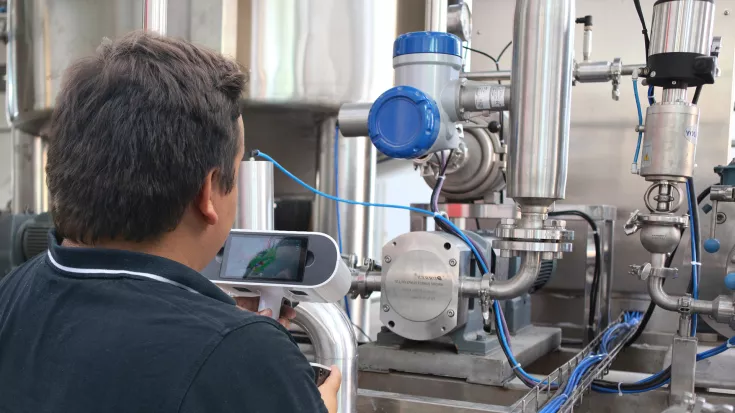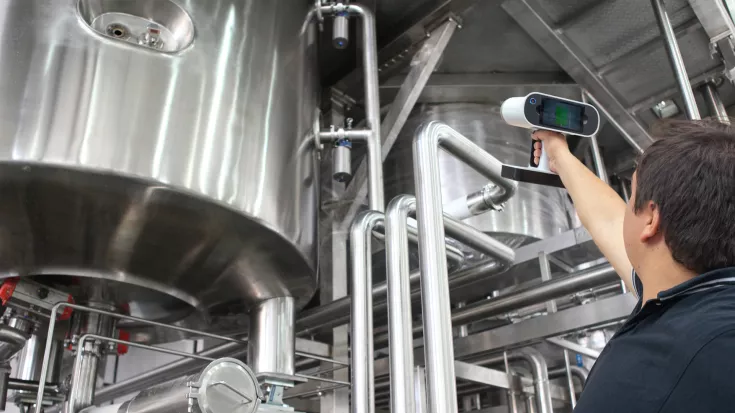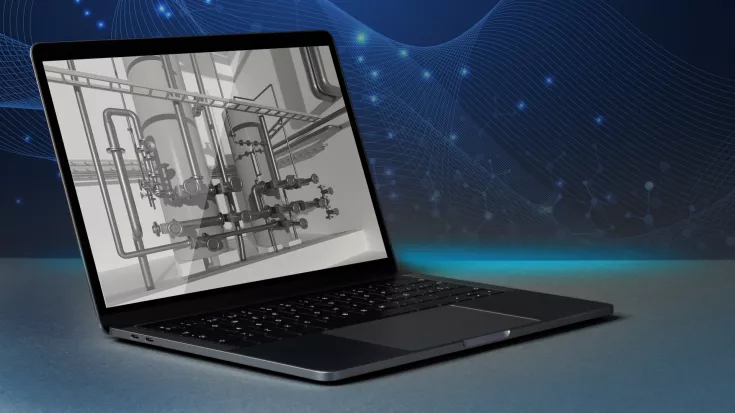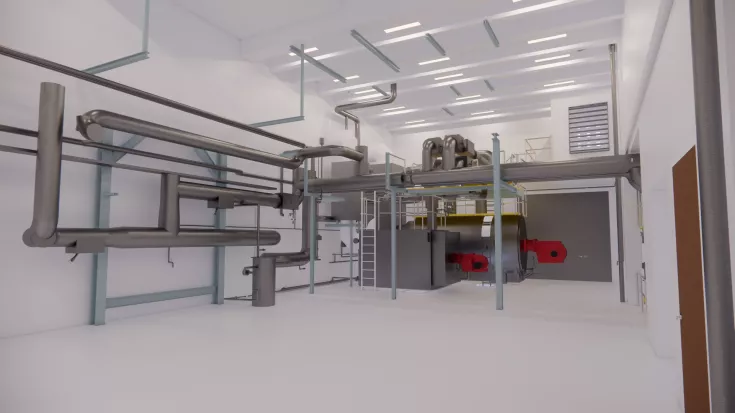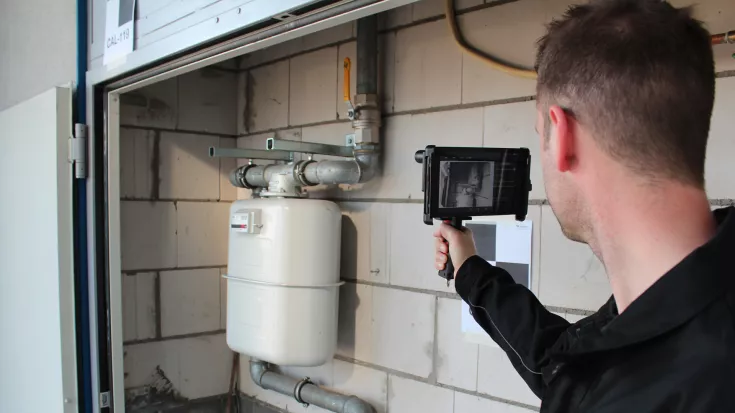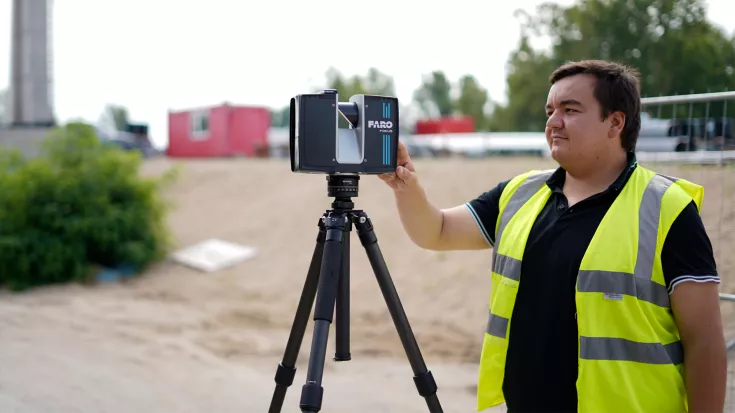Laser Scanning & 3D Modeling in MEP
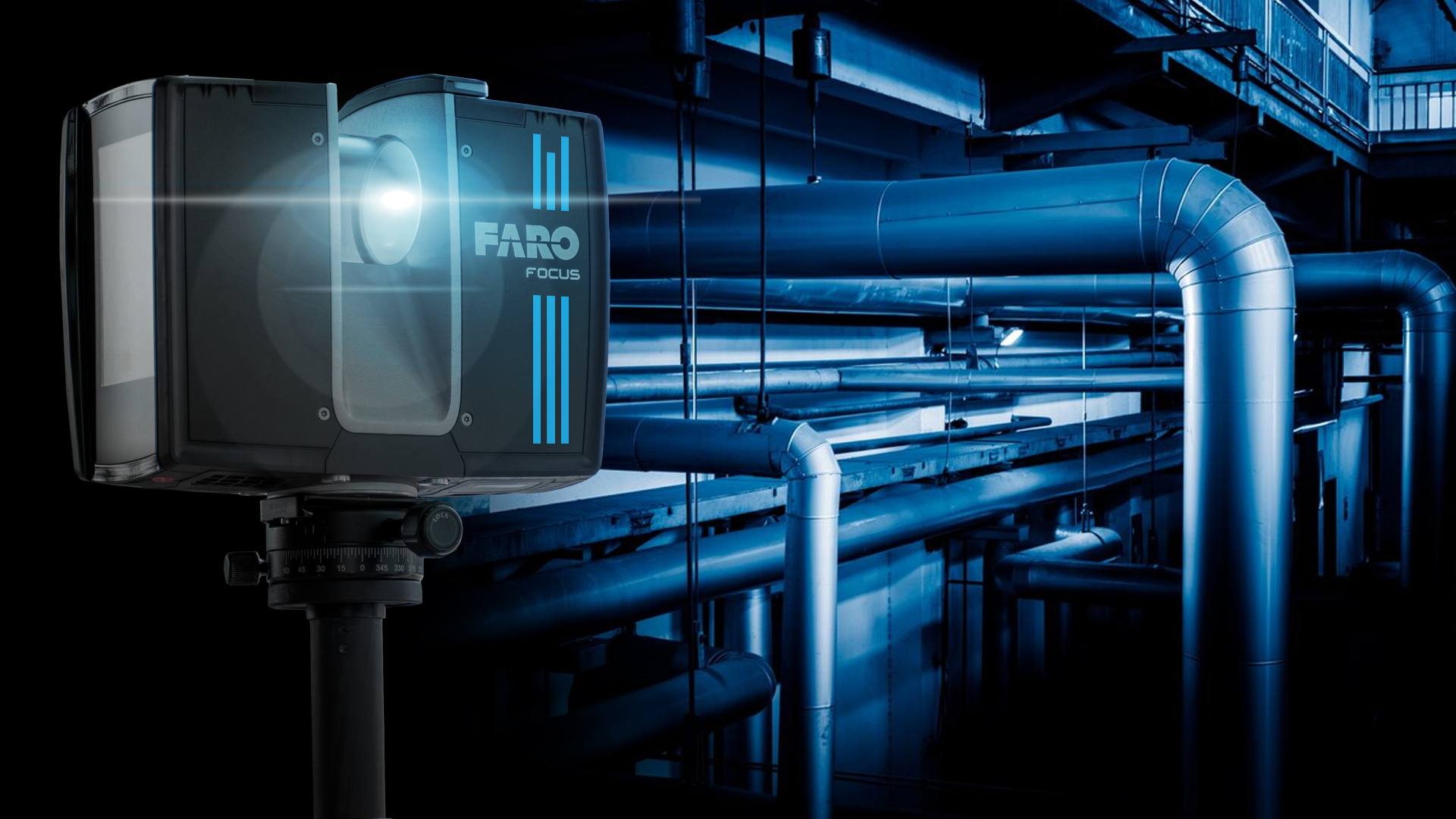
TitleInnovative MEP planning: 3D scanning & 3D modeling as the key to efficiency
Mechanical, Electrical and Plumbing is at the heart of modern buildings and are crucial for comfort, energy efficiency and operational safety. Innovative technologies are used to improve the planning, installation, maintenance and optimization of these complex systems.
With 3D laser scanners, systems can be precisely digitally captured and transformed into detailed digital models. These technologies make it possible to obtain a complete, up-to-date image of the building services infrastructure. This optimizes planning, simplifies documentation and makes maintenance more efficient. Find out how precise 3D data and BIM solutions help to implement MEP projects faster, more cost-efficiently and more sustainably.
TitleThe laser scanning process: From data capture to your 3D model
The laser scanning process begins by capturing the physical space or object using high-precision scanners that generate millions of individual measuring points, known as point clouds. These point clouds contain detailed information about distances and surface structures and form an exact digital image of the real condition.
The raw data is then imported into specialized software, where it is cleaned up, registered and processed into a consistent 3D model.
This workflow makes it possible to precisely map even complex geometries and areas that are difficult to access, creating a solid basis for further analysis and planning.
TitleHow do laser scanners help in MEP?
Laser scanners enable precise documentation of the existing MEP infrastructure. Highly accurate point clouds allow complex systems to be digitally mapped and integrated into planning or maintenance processes.
The advantages:
- Precision: Measurement of complex systems with millimeter accuracy, even in areas that are difficult to access.
- Efficiency: Fast and comprehensive recording of all relevant data in the shortest possible time.
- Transparency: Better overview and documentation of existing systems.
- Planning reliability: Optimal basis for conversions, extensions or optimizations.
TitleWhich laser scanners are used?
Terrestrial scanner
These fixed-mounted or stationary scanners offer maximum accuracy and are ideal for the detailed measurement of interior spaces, machine rooms and supply shafts. They are particularly suitable for large areas that require detailed coverage.
TitleWhich areas of the TGA does the laser scanner survey?
Various systems and installations play a crucial role in MEP. Laser scanners help to precisely document and analyze them:
Supply technology
Includes power supply, electricity and water supply. Laser scanning supports the documentation of routes and connection points.
Facilities in outdoor installations
External supply facilities such as pipelines, shafts or pumping stations can be precisely captured, even in difficult terrain.
Systems for building heating & drinking water heating
Laser scanners provide accurate models of boilers, pipes and valves, making maintenance and optimization easier.
Ventilation & air conditioning systems (HVAC)
The complex systems of ventilation systems, air ducts and filters can be documented in detail in order to optimize energy efficiency and functionality.
Refrigeration systems
Refrigeration systems, pipes and condensers can be precisely measured and monitored.
District heating & district cooling
Laser scanning is an ideal method for documenting pipe networks and connection stations for large-scale heating or cooling supplies.
TitleWhat is the role of CAD systems?
The data from laser scanners is usually imported into CAD systems. There they can be further processed and integrated into existing planning processes.
The advantages:
- Detailed models: Point clouds can be turned into exact 3D models.
- Optimized planning: The data serves as the basis for adjustments and extensions in the MEP.
- Integration: CAD systems enable the integration of MEP data into higher-level projects.
TitleIntegration of digital models in BIM systems & data formats used
The 3D models obtained from laser scanning are usually integrated into BIM systems to enable a holistic digital representation of buildings and facilities. They are usually imported using standardized data formats such as IFC (Industry Foundation Classes), RCP/RCS (Autodesk Recap) or common formats such as OBJ, STL and FBX. These formats ensure seamless interoperability between different software solutions and enable further processing of the models in CAD and BIM applications.
Integration into BIM systems allows architects, engineers and facility managers to work on a common database, which is essential for the planning, maintenance and optimization of technical building equipment.
TitleHow does laser scanning support BIM planning in MEP?
Building Information Modeling (BIM) is an indispensable tool for planning and managing modern buildings. Laser scanning is an ideal complement to BIM because
- the point cloud data can be integrated directly into BIM software.
- a digital twin of the entire MEP is created.
- data is made available for construction and operating phases.
The integration of laser scanning and BIM offers consistent planning and documentation of all systems and enables future changes or maintenance to be planned efficiently.
TitleControlling: Efficiency through accurate data
In addition to planning, controlling plays a central role. Laser scanners provide the basis for the:
- Checking construction progress and installations: Comparison of actual and target state.
- Cost control: Precise documentation enables deviations to be identified at an early stage.
- Long-term maintenance: Laser scanning data serves as the basis for maintenance plans and analyses.
TitleMaintenance & optimization of MEP processes
The continuous updating of digital models makes the maintenance and optimization of TGA processes considerably more efficient. Regular scans and updates ensure that the digital model always reflects the current condition of the systems – from minor signs of wear to major changes.
Facility managers can thus detect deviations at an early stage and initiate preventive maintenance measures before expensive breakdowns occur. At the same time, the constantly updated data enables a detailed analysis that can be used to specifically identify and implement optimization potential, for example in terms of energy efficiency or the use of resources. In this way, continuously updated digital models help to extend the service life of HVAC systems, reduce operating costs and ensure safe and economical operation.
TitleDigital transformation in MEP
Whether for supply technology, ventilation systems or integration into BIM models – laser scanning offers invaluable help in mastering the complexity of technical building equipment. Precise capture, integration into CAD and BIM systems and support in planning and controlling enable efficient and sustainable building operation.
Contact us to find out more about our laser scanning services.
